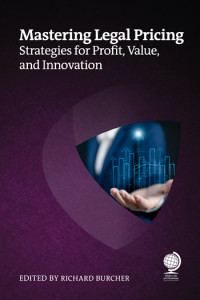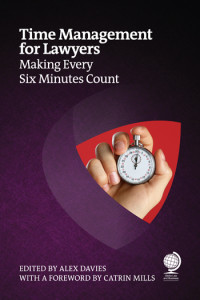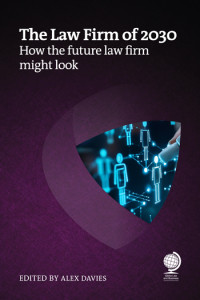
Browse books

Price: £159.00
ISBN: 9781837231584
Notify me when this book is available and claim your 25% discount
The Risks of Artificial Intelligence in Law
Price: £159.00
ISBN: 9781837231584
Notify me when this book is available and claim your 25% discount
Artificial intelligence is reshaping legal practice but its adoption brings significant challenges. The Risks of Artificial Intelligence in Law examines AI risks in law, offering a clear-eyed analysis of risks across five domains – privacy, reliability, operational, cultural, and intellectual property. Drawing upon candid insights from over 30 legal professionals and technologists across jurisdictions and roles (including users and solutions providers), the book reflects perspectives from every stage of the AI product life cycle. Beyond technological concerns, Matthew Seet and An-Ru Stevens address issues such as complacency, the impact on legal training, and the sustainability of the billable hour model. With peer-validated strategies, this book enables legal professionals to confidently navigate AI adoption while upholding ethical and professional obligations. For those grappling with stalled pilots or uncertainty, the book provides practical guidance to build literacy, manage risk, and make informed decisions in a fast-evolving landscape.
more...
Price: £95.00
Discounted Price: £71.25
ISBN: 9781837230976
Preparing Lawyers for Technology Transformation
The Exponential Age Mindset
Price: £95.00
Discounted Price: £71.25
ISBN: 9781837230976
The growth in technology is forecast to increase exponentially going forward. What this means for business is that technology will radically change the way we work, and that constant change will become the norm.
In law, this change has not taken effect as radically as in other areas of business, but it is a matter of when, not if. This book identifies nine mindset attributes that are fundamental to success – to individuals, their teams, and their organizations.
As AI adoption increases, there has been less focus on the human-centred skills that are needed to thrive. Preparing Lawyers for Technology Transformation: The Exponential Age Mindset focuses on how legal departments and law firms can ensure their employees have the mindset and the skill set to optimize this transformation. Increasingly, GCs are seeing that engaging the entire legal department is key to success, and that many non-lawyer roles are going to be even more central as tech and GenAI becomes more prevalent.
more...
Price: £99.00
Discounted Price: £74.25
ISBN: 9781837231676
The Future of Legal Knowledge Management:
Harnessing Artificial Intelligence
Price: £99.00
Discounted Price: £74.25
ISBN: 9781837231676
The Future of Legal Knowledge Management: Harnessing Artificial Intelligence provides innovative and robust solutions to some of the most pressing issues facing KM practitioners today, including the ways in which knowledge managers can build a strong data foundation for AI application; how to develop the AI-empowered lawyer; gaining organizational and partner support for AI-augmented legal KM; modernizing existing KM architecture in the age of AI; and navigating the implementation of agentic AI.
more...
Price: £159.00
ISBN: 9781837230914
Add to basket (UK and Europe)Click to buy (USA, rest of world)
Mastering Legal Pricing
Strategies for Profit, Value, and Innovation
Price: £159.00
ISBN: 9781837230914
Add to basket (UK and Europe)Click to buy (USA, rest of world)
The legal profession is undergoing a significant transformation in how legal services are priced. The traditional billable hour model, which has dominated for decades, is increasingly being questioned by clients, firms, and legal professionals alike. The world of legal pricing is evolving rapidly, driven by shifts in client expectations, technological advancements, and new market dynamics. Law firms and legal professionals must adapt to these changes to stay competitive, ensure profitability, and meet the demands of a diverse and increasingly cost-conscious client base.
Mastering Legal Pricing: Strategies for Profit, Value, and Innovation explores the evolving landscape of legal pricing, addressing the challenges and opportunities that law firms face in adapting to modern economic demands. From the traditional billable hour to alternative models such as subscription-based services and value-based pricing, this book examines the impact of client expectations, technology, and evolving business strategies. It provides insight into the tools, frameworks, and strategies necessary to create more transparent and efficient pricing models that align with both client needs and law firm profitability.
more...
Price: £159.00
ISBN: 9781837231348
Add to basket (UK and Europe)Click to buy (USA, rest of world)
Time Management for Lawyers
Making Every Six Minutes Count
Price: £159.00
ISBN: 9781837231348
Add to basket (UK and Europe)Click to buy (USA, rest of world)
Time Management for Lawyers: Making Every Six Minutes Count is a comprehensive guide designed to help legal professionals take control of their time and enhance both productivity and wellbeing. In a fast-paced and high-pressure profession, time management is the key to thriving – not just surviving. This book explores practical strategies for managing overwhelming caseloads, maintaining a healthy work–life balance, and preventing burnout. It covers the latest technological influences, including how AI is reshaping how lawyers manage time and tasks, while also addressing the mental and emotional challenges of working in law.
From optimizing focus to managing client demands and avoiding distractions, this book helps lawyers achieve peak performance while still leaving room for creativity, innovation, and personal wellbeing. With expert advice on delegation, prioritization and setting clear goals, Time Management for Lawyers: Making Every Six Minutes Count equips you with the tools to reclaim your time and thrive in your legal career.
more...
Price: £159.00
ISBN: 9781837231379
Add to basket (UK and Europe)Click to buy (USA, rest of world)
Beyond Bias, Second Edition
Unleashing the Potential of Women in Law
Price: £159.00
ISBN: 9781837231379
Add to basket (UK and Europe)Click to buy (USA, rest of world)
This second edition of Beyond Bias: Unleashing the Potential of Women in Law offers a holistic, nuanced examination of women’s journeys, achievements, and challenges in law and the ways in which firms and practitioners can implement meaningful change.
more...
Price: £159.00
ISBN: 9781837230884
Add to basket (UK and Europe)Click to buy (USA, rest of world)
AI and the Legal Profession, Second Edition
Transforming the Future of Law
Price: £159.00
ISBN: 9781837230884
Add to basket (UK and Europe)Click to buy (USA, rest of world)
The capabilities and applications of artificial intelligence (AI) are evolving at breakneck speed, and law firms and practitioners may be at a loss as to how to make the most of what these new technologies offer. The second edition of AI and the Legal Profession: Transforming the Future of Law acts as a guide, helping readers navigate this new frontier by delving into the impact of AI on the legal industry and the transformative possibilities it presents.
Written by leading experts, thought leaders, and professional and academic pioneers at the intersection of AI and law, AI and the Legal Profession: Transforming the Future of Law, second edition serves as a comprehensive guide for legal professionals, technologists, and policymakers, equipping readers with the knowledge and insights needed to navigate a rapidly evolving landscape, embrace AI's potential, and harness its power to shape the future of law.
more...
Price: £195.00
ISBN: 9781837230822
Add to basket (UK and Europe)Click to buy (USA, rest of world)
Foundations and Evolutions of Structured Trade Finance, Second Edition
Price: £195.00
ISBN: 9781837230822
Add to basket (UK and Europe)Click to buy (USA, rest of world)
Structured trade finance (STF) is a highly specialized area of trade finance that has evolved directly from practice. As it grows and becomes more complex in an increasingly risk-based regulatory environment, there is a pressing need for detailed guidance on the subject.
Now in its second edition, Foundations and Evolutions of Structured Trade Finance provides exactly this. Written by Professor Benedict O. Oramah, president of Afreximbank and a key figure in the evolution of STF, this book delves into the philosophical foundations and risks associated with structured trade finance. It offers step-by-step guidance on structuring deals, explores the scope of coverage beyond commodities, and examines real-life case studies to draw valuable lessons.
The new edition has been revised and updated, featuring brand new sections on reserve-based lending, supply chain finance, and new technologies for implementing structured trade finance.
more...
Price: £159.00
ISBN: 9781837230853
Add to basket (UK and Europe)Click to buy (USA, rest of world)
The Law Firm of 2030
How the future law firm might look
Price: £159.00
ISBN: 9781837230853
Add to basket (UK and Europe)Click to buy (USA, rest of world)
The legal profession stands on the precipice of transformative change. The Law Firm of 2030: How the future law firm might look delves into the dynamic and rapidly evolving landscape of law, offering a visionary glimpse into what the future holds for legal practitioners.
more...
Price: £159.00
ISBN: 9781837230464
Add to basket (UK and Europe)Click to buy (USA, rest of world)
US Business Litigation Risks
A Comprehensive Handbook for Business Owners and the Attorneys Who Advise Them, Second Edition
Price: £159.00
ISBN: 9781837230464
Add to basket (UK and Europe)Click to buy (USA, rest of world)
Why are companies so frequently sued in the United States, and how might these business litigation risks be avoided through preventative measures and more effectively managed? This book, now in its second edition, answers those two weighty questions. Written for a diverse audience, US Business Litigation Risks will be useful for anyone whose responsibilities include managing US litigation risks.
more...




